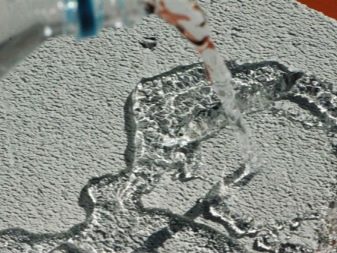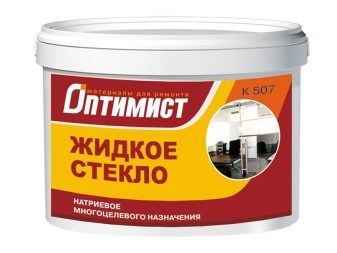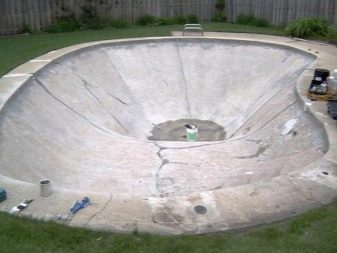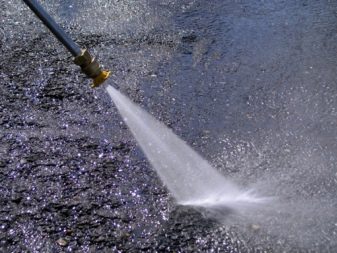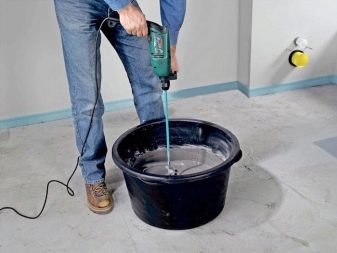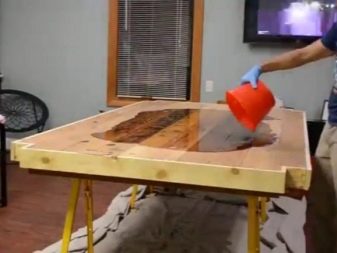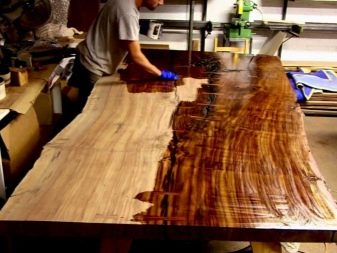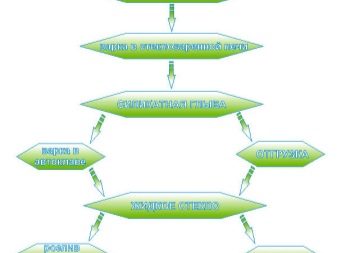Features and use of liquid glass
In the process of repair and finishing work can not do without high-quality adhesives. Fortunately, today the choice of such products is great and finding the right option is not difficult. Among the wide range of different types of glue is to provide liquid glass. Today we will talk about the features and intricacies of applying such a composition.
What it is?
Every person is familiar with ordinary glass. This material appeared more than 5000 years ago in Egypt. However, not every consumer is aware of what liquid glass is.
Another name for this composition is silicate glue. It consists of water and silicate salts. For the manufacture of such an adhesive mixture, the same components are used as in the manufacture of glass products.
At the moment there are several technologies for the production of liquid glass. The most popular of these is the effect of solutions on materials with a silica content at constant temperatures.
Special features
In our time, the range of finishing materials is striking in its diversity. Due to the wide choice of various mixtures and compositions, masters have the opportunity to perform almost any repair work. So, one of the most popular and popular adhesive compositions is liquid glass. Such products can be used for a variety of purposes. In addition, the use of high-quality liquid glass can extend the life of the building.
Such a high-tech silicate adhesive is made on the basis of sodium, potassium or lithium. The last component is the least used.
The main feature of liquid glass is that it can easily penetrate into the structure of rigid materials. At the same time, this adhesive gives up its moisture, increasing the degree of viscosity and density.
Such a composition has high adhesive properties. It is also distinguished by thermal conductivity.Due to these features, this silicate glue is often used during thermal insulation works. Insulation, which was installed with the use of liquid glass, is capable of withstanding record-breaking temperatures up to 1200 degrees Celsius.
Liquid glass can improve the performance of other materials. For example, it is often mixed into concrete. Such a mixture is permissible to use for the construction of various structures, which will regularly come into contact with moisture and moisture.
Silicate adhesives are used not only for repairs. They can be bought for laying various finishing materials, surface treatment to provide additional fire safety, as well as for polishing the bases that need it. It is worth noting that liquid glass has a special structure that can make any surface smooth and shiny.
Advantages and disadvantages
Merits
The silicate composition is a popular and sought after material. This is due not only to the wide range of its application, but also to the many positive qualities that are inherent in this composition.
- Liquid glass deposited on a particular base, after drying repels moisture and moisture, thus this mixture plays the role of a high-quality water-repellent agent.
- Such compounds destroy harmful bacteria, and also prevent their appearance in the future. This means that liquid glass is a good antiseptic.
- Liquid glass does not allow static electricity to appear on the surface of the base. Due to this characteristic, dust is not accumulated in the areas treated with this product.
- If various defects are present on the basis, for example, cracks, then it should be treated with liquid glass. In this case, this adhesive composition will fill the damaged areas, and also make the foundation more durable.
- Such mixtures have a suppressive effect on acids and protect the bases from fire, making them more fireproof.
- Many consumers have noticed the economical consumption of liquid glass. Of course, a lot here depends on the master himself.
- Liquid glass boasts excellent anti-corrosion properties.
- This material is in good contact with mineral bases.
- The demand for such adhesive mixtures is due to their democratic value. Everyone will be able to afford high-quality liquid glass.
- Similar structures differ in long service life. They do not lose their useful qualities even after many years from the moment of application.
- Using liquid glass, it is possible to significantly extend the service life of concrete and paint coatings.
- These compounds are resistant to abrasion.
- In addition, liquid glass boasts excellent adhesion properties. It easily grabs with a variety of materials, from drywall to concrete.
- It is quite easy to work with this adhesive composition, as it rests seamlessly on any bases.
disadvantages
According to most home craftsmen, working with liquid glass is a pleasure. However, this material is not ideal.
It also has its drawbacks, which must be taken into account in the course of repair work.
- The main disadvantage of liquid glass is the presence in its composition of a large amount of alkali. These ingredients have an adverse effect on the skin, so it is recommended to work with such adhesive mixtures in high gloves, as well as in protective clothing and shoes.
- Experts also attribute the list of deficiencies to the too rapid setting of liquid glass with other surfaces. This material hardens literally in 20 minutes, after which it can no longer be used. Because of this, it is necessary to work with such mixtures as quickly as possible.
- Liquid glass can be used for waterproofing is not in all cases. These works will be produced only if the base is in an easily accessible place, for example, on the surface of the foundation.
Kinds
At the moment there are several varieties of high-quality liquid glass. Each of them is used for different purposes and has its own characteristic features.
Sodium
Sodium glass is a solution of high viscosity, based on sodium salts. Such material has excellent adhesion characteristics, as well as increased strength and durability. It can be applied to materials that have a very different structure. Sodium mixtures are not afraid of temperature extremes. In addition, they are not subject to fire and are not deformed.
For sodium adhesives are some features.
- Such mixtures dry very quickly - within 10 minutes.
- If the material is frozen, you can add more water to it and mix it well so that it can be used again.
- Sodium liquid glass is a material that is often used when laying tiles. In this case, sodium silicate is diluted with water for a good primer.
- If, before laying the sodium compound, simple liquid glass was applied to the base, then it is not worth waiting for it to dry out - the hardened glassy film will interfere with sufficient adhesion of materials.
Sodium adhesive compositions are used both in construction and in everyday life, for example, for cleaning dishes, removing various stains or plumbing.
Potassium
This kind of silicate glue is based on potassium salts. The structure of this glue is quite loose. In addition, these mixtures are distinguished by high hygroscopicity. Surfaces covered with potassium liquid glass are not afraid of overheating and mechanical damage.
Such mixtures have the following properties:
- they create excellent adhesion;
- they are not afraid of temperature jumps;
- high-quality potassium compound can protect the base from aggressive chemicals;
- protects the base from the appearance of defects such as fungus and mold;
- significantly increases the resistance of the base to abrasion;
- quite easily absorbs excess moisture, especially if you compare the potassium composition with sodium;
- does not melt under the action of high temperatures;
- forms on the basis of a more dense and elastic coating;
- after hardening, it acquires a matte surface that does not have stains or glare.
Lithium
Lithium glass is a product that is produced in limited quantities. Due to the special structure of such compounds can provide excellent thermal protection of any bases.
Scope of application
Liquid glass is used in various fields of activity, and therefore belongs to universal materials.
Silicate mixtures are very often used for high-quality waterproofing of various materials. Such compositions are often treated walls and the foundation, not only public and private buildings, but also garages, which also require sufficient waterproofing.
High-quality liquid glass makes these or other bases moisture resistant.In conditions of increased dampness and humidity, the treated coatings will not be destroyed or deformed.
Liquid glass is rightfully recognized as one of the most effective and effective antiseptic. It can be laid on the walls, on the floor, and on the ceilings in the room. Thanks to competent processing by such a composition, these surfaces will not be exposed to the formation of fungus and mold, which can be very difficult to get rid of.
It is worth noting that liquid glass can be used not only to prevent, but also to remove fungal formations, if they have already started on the walls / ceiling / floor. It is enough to treat the damaged base with such a sticky solution, after which the destructive defects simply disappear from its surface.
Due to such abilities, liquid glass is often turned to the preparation of floors for future wallpapering. In this case, antiseptic treatment is imperative, especially if the canvases are not "breathable."
In the construction sphere, one cannot do without high-quality liquid glass. In this case, the waterproofing properties of the material come in handy.In addition, silicate adhesive mixtures can be used in the attic and basement.
Liquid glass is indispensable in repair work., because it protects the concrete structures perfectly. It can be applied on different bases, including screeds and concrete blocks. After such treatment, such surfaces become more durable, moisture-proof and fireproof.
Silicate products are used for the treatment of wells. As a rule, such works are carried out in two stages. First, the finishing material is laid on the partitions, and then it is covered with sand-cement mortar and liquid glass.
Also, liquid glass is a suitable material for processing the internal walls of the pool. Formed after applying the film is able to protect such structures from damage and leaks. According to experts, for the treatment of such bases (both outside and inside) should be applied 2-3 dense layers of liquid glass. In this case, such a composition can be used both in an undiluted form and supplemented with various components.
However, it should be borne in mind that liquid glass should not be applied on brick substrates, since this material may lead to the gradual destruction of masonry.For such structures, it is better to use a special composition of the PVA.
Liquid glass is purchased not only for repair work. So, sodium and potassium mixtures are often used for simple household purposes. Since these mixtures seamlessly interlock with most different surfaces, they are used when laying PVC panels and linoleum.
When in the room it is necessary to lay metal pipes, liquid glass can be used as a sealant for communications.
Also, various fabrics are impregnated with liquid glass. Such processing requires that the textile is non-flammable. In addition, many owners use these compounds to protect the tree (trunks and branches) from pests.
Such adhesive mixtures can also be used to polish various surfaces. They can be applied to the surface of the table, pedestals, shelves and other suitable grounds that you want to give a more presentable and brilliant look. Also using liquid glass it is permissible to repair damaged parts made of glass and porcelain.
Liquid glass is often used as an additional ingredient in the manufacture of beautiful self-leveling floors with a 3D effect.In addition, car mechanics are turning to these transparent blends, since they can be used to process car bodies. For this, a two-component substance is often used with an optimum ratio of hardness, hydrophobicity and gloss.
Other applications
- liquid glass is used in the design of stretch ceilings;
- mirrors;
- ceramic tiles;
- mosaic panels;
- stained glass canvases.
How to cook?
Today in stores you can find both ready-made liquid glass, and compositions that need to be prepared independently. Of course, most buyers prefer ready-made options, although they are not so common - liquid glass is more often used as an additive for preparing a certain solution. However, they are more expensive and need to spend them completely, otherwise the composition will simply dry out.
The use of individual components is much cheaper, so the manual preparation of liquid glass remains relevant for many masters.
Self-preparation of liquid glass is an easy process that everyone can handle.
To do this, you need to purchase the following devices and materials.
- Bucket.It is worth taking a separate container, which you plan to use only for construction work. The level of toxicity of silicates is not too high, but they are recommended to be kept away from foreign objects, such as fruits or vegetables.
- Electric drill with a screw nozzle. Such a tool is ideal for mixing very thick solutions.
- Brush or spray.
- Cement. In this case, it is quite possible to do with simple Portland cement.
- Fine sand.
- Water.
- Putty knife.
- Special clothing for protection.
Mix liquid glass with water and other listed components should be in accordance with the proportions required for specific works. If the base on which you plan to apply the mixture reduces the level of its adhesion, then it is recommended to use less water or add more cement.
Dilute water glass can be ordinary cold water. To keep its quantity under control and not to overflow, it is recommended to use special volumetric glasses.
As a rule, first water is poured into the container, and then cement is poured.These components are thoroughly mixed and liquid glass is added to them. To stir the solution as soon as possible, it is worth using a handy construction mixer. Try to make a batch composition quickly, without being distracted by other things, because it will dry in half an hour - you do not have much time. Of course, if you do not fit in this time, it is worth adding a little more water to the mixture.
For the manufacture of waterproofing composition you need to take one part of fine sand, liquid glass and Portland cement. The listed ingredients need to fall asleep in a container with water already poured. After that, all components need to mix well.
As for the preparation of the refractory composition, the process of its preparation consists of two stages.
- First you need to make a mixture of three parts of sifted sand and one part of Portland cement.
- Next, add liquid glass to this mixture. In this case, this component is mixed in the calculation of 25% for the entire volume of the composition.
Such solutions can be safely used to create high-quality stoves or fireplaces.
An antiseptic solution can also be prepared with your own hands. It is simply necessary when it comes to protecting wooden surfaces that are prone to rotting. In this case, the material must be diluted with water 1: 1. Such a mixture is ideal for bases made of concrete, covered with plaster or stone structures.
To strengthen the main surface, you need to prepare a solution consisting of 1 liter of water and 300 g of liquid glass. However, it should be borne in mind that in the process of processing a greater effect, you will be able to achieve if you apply such a solution in 3 or more layers. Do not forget to take breaks between the laying of each layer.
According to experts, it will be better if you mix the dry mixtures first, and add the liquid to them only later. As a result, you should have a liquid and homogeneous mixture.
How to apply?
For the application of liquid glass does not need special knowledge and rich experience. The main thing is to follow simple instructions, and then such work will not take you much time and effort.
Let us consider how to use such a mixture on the example of treating walls covered with soil.
- Beforehand prepared primer should be applied on this or that basis only after you remove from it dust and any pollution.
- When the base is perfectly clean, you should take a roller (or brush), and then apply the first layer of soil on the treated surface.
- Be sure to wait until the first applied layer dries out. After that, you can proceed to smearing the base with a second layer of finishing material. Do not allow gaps or smudges.
- Now you need to prepare a protective composition of cement, sand and liquid glass. Mix all necessary ingredients well. Wait until the primer is completely dry on the substrate.
- After that, the solution must be immediately applied to the finished wall with a spatula. When carrying out such work, you should wear special safety glasses, gloves and protective clothing.
- As a result, you will only have to wait until the liquid glass on the wall is completely dry.
Manufacturers
Currently in the building materials market there are many large and well-known manufacturers producing high-quality liquid glass. Many of them offer a service for the delivery of this practical material.
Let's get acquainted with some manufacturers.
"HimStroyResurs"
This manufacturer manufactures liquid glass on an industrial scale. The products manufactured by ChemStroyResurs meet all quality standards and meet state standards.
The range of this large manufacturer consists not only of liquid glass, but also of epoxy glue, furfuryl alcohol, sour-proof tile / brick and acid-resistant nozzles. The cost of production of the company "Himstroyresurs" is affordable.
Metterra
This is a major Russian manufacturer of liquid sodium glass. The company of the same name produces high-quality products having a density of 1.2-1.5 g / m2 and a module from 2.6 to 3. According to the manufacturer, its liquid glass is environmentally friendly and absolutely safe.
Metterra offers liquid glass in customer’s containers, as well as barrels with a volume of 200 liters and cans from 10 to 100 liters. Under the temperature of -15 degrees, the compositions of this manufacturer can be stored for about 30 days.
"GlassProduct"
Trading House "StekloProdukt" engaged in the manufacture and sale of quality products. The assortment of this brand contains foam glass, silicate lumps, glass bottles and liquid glass.Currently, the products manufactured by this company are used in many industrial enterprises.
"StekloProduct" manufactures the sodium composition with all the requirements and quality standards. The process of production of liquid glass is subject to constant checks at each stage, so the risk of releasing defective products is excluded.
Storage and Safety
Silicate glue is not a dangerous and toxic material, but when working with him you must follow a number of simple rules.
- Work as carefully as possible. Do not allow liquid glass to enter exposed skin. In addition, it is necessary to protect the mucous membrane and eyes. When applying a protective compound, avoid splashing.
- A mixture of liquid glass must be prepared in high gloves and glasses.
- Always close the jars and other containers in which liquid glass is stored or stored as tightly as possible. This should be done immediately after using the material - do not leave the container open.
The shelf life of this adhesive composition is 1 year. Such material is permissible to be subjected to multiple freezing, it will not affect its performance.During storage, a precipitate may appear, but this is considered normal.
Tips
Most consumers leave only positive feedback on the use of liquid glass. This material is easily applied to many substrates, after which they become more durable and look smooth and neat.
If you also decide to refer to such a useful and practical solutions, then you should listen to some of the advice of experts.
- If you decide to apply liquid glass on one or another basis, then you should defat it well. Through this preparation, the adhesive mixture will adhere better to the base coat.
- In the process of mixing the solution, make sure that no foreign particles or debris get into it. This may adversely affect coating adhesion.
- It is not recommended to put liquid glass on the basis under plaster or paint. In this case, the film that appears will interfere with further processing.
- If you want to reduce the hardening properties of the solution, then first you need to mix liquid glass and water, and add the cement-sand mixture later.
- Do not disturb the proportions of the components for the preparation of liquid glass.Such errors can lead to inefficiency of the resulting composition.
- If you have inflicted a silicate composition on a car body, then it is recommended to update it about once a year, despite the fact that manufacturers guarantee the retention of this material on the car for 3 years.
- Silicate products can be used when pruning garden plants. To do this, such compounds are processed damaged items. Thanks to this treatment, the plants do not rot.
- Try to drip liquid glass on other surfaces that you are not going to cover them. Many consumers are wondering how to remove such a composition from other grounds. There is no single way to remove liquid glass, however, some users advise to pour it with hot water and rub until it is completely removed. Some erase this mixture with a blade, while others use vinegar to dissolve it.
How to apply liquid glass on the concrete with the hands, look in the following video.



